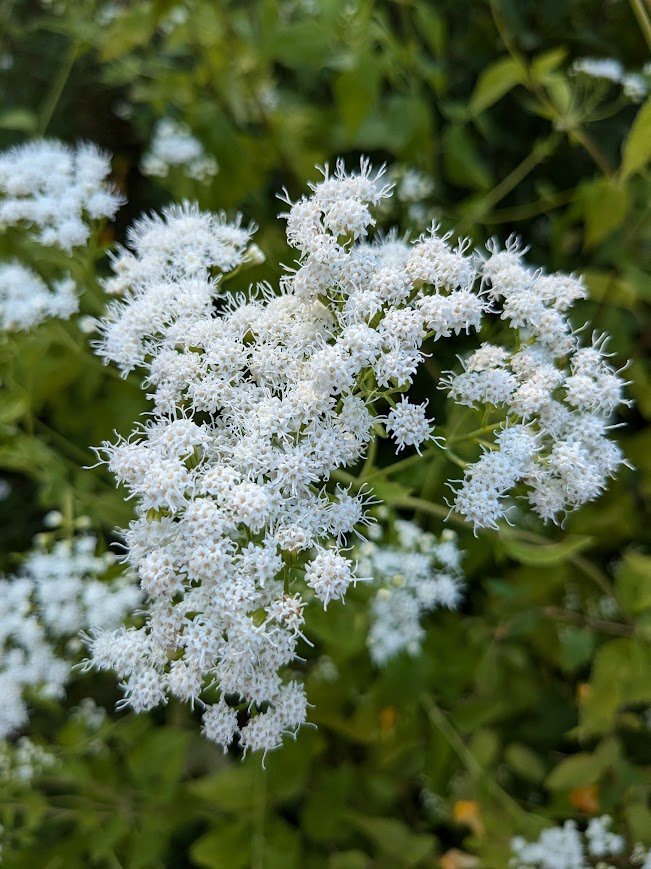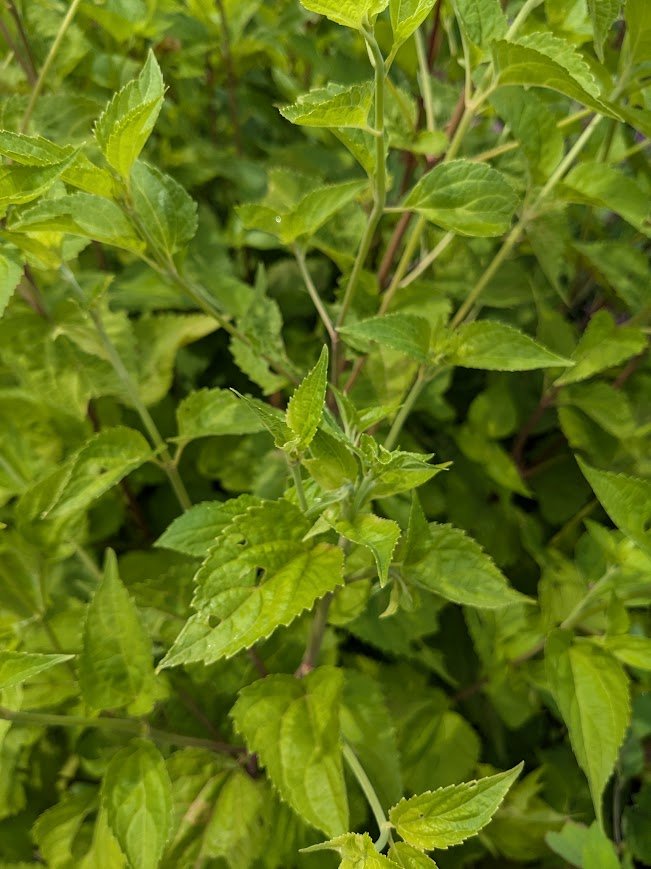 Image 1 of 6
Image 1 of 6

 Image 2 of 6
Image 2 of 6

 Image 3 of 6
Image 3 of 6

 Image 4 of 6
Image 4 of 6

 Image 5 of 6
Image 5 of 6

 Image 6 of 6
Image 6 of 6







Snakeroot - Seeds & Bare Root Plant
(Ageratina altissima)
If you know me well, then you know that snakes are my favorite animal, so of course I am drawn to snakeroot. The common name comes from its use by Native Americans to treat snakebites, but please be aware that the entire plant is poisonous when ingested. Despite this scary fact, Snakeroot is a beautiful plant to grow in shady areas of your garden or woods. The stems can grow anywhere from one to four feet tall and bloom in late Summer to early Fall. The bright white flowers are very eye catching especially in shady forests.
Do note that Snakeroot is poisonous to humans and animals so take care to plant it away from where dogs and children might nibble.
Seeds require cold stratification to germinate—read this quick article to learn how to accomplish this.
Hardiness: Zone 3-8
Soil: Loam, clay, average to low moisture
Light: Full sun to shade
Options:
Bare Root Plants: Plant into loose soil in the fall or spring and keep moist until new growth emerges.
Seed Packet (50 seeds).
(Ageratina altissima)
If you know me well, then you know that snakes are my favorite animal, so of course I am drawn to snakeroot. The common name comes from its use by Native Americans to treat snakebites, but please be aware that the entire plant is poisonous when ingested. Despite this scary fact, Snakeroot is a beautiful plant to grow in shady areas of your garden or woods. The stems can grow anywhere from one to four feet tall and bloom in late Summer to early Fall. The bright white flowers are very eye catching especially in shady forests.
Do note that Snakeroot is poisonous to humans and animals so take care to plant it away from where dogs and children might nibble.
Seeds require cold stratification to germinate—read this quick article to learn how to accomplish this.
Hardiness: Zone 3-8
Soil: Loam, clay, average to low moisture
Light: Full sun to shade
Options:
Bare Root Plants: Plant into loose soil in the fall or spring and keep moist until new growth emerges.
Seed Packet (50 seeds).

